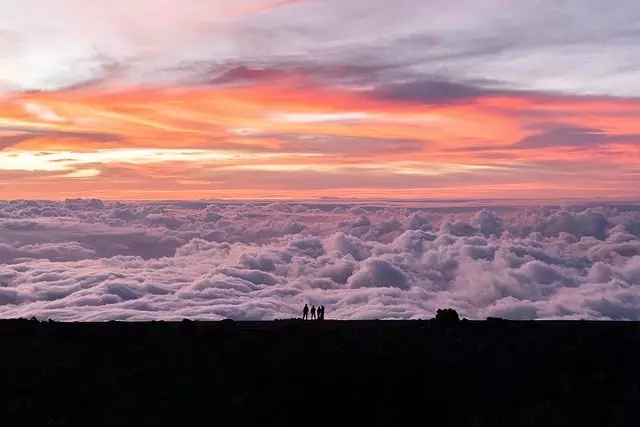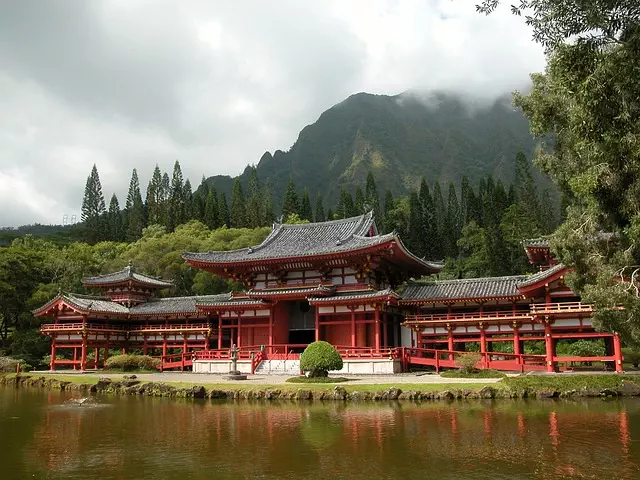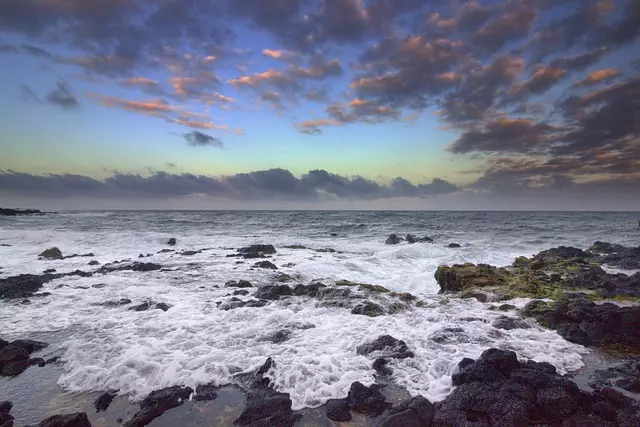This section of the guide emphasizes the importance of visiting Hawaii's historical plantations for a comprehensive understanding of the islands' cultural heritage and agricultural history. These plantations are integral to Hawaii's past, reflecting the influence of various immigrant communities on the native Hawaiian culture, and offer enlightening insights into the state's former sugarcane dominance as well as its current production of coffee, pineapple, and macadamia nuts. A Hawaii travel guide recommends these sites as some of the best places to visit in Hawaii for history enthusiasts and nature lovers alike, providing a tangible connection to the islands' rich agricultural legacy through preserved mills, worker residences, and irrigation systems. These living classrooms not only preserve but also educate visitors about key historical events from King Kamehameha's reign to the peak of the 19th-century plantation era. For an authentic immersion into Hawaii's heritage and a deeper appreciation of its natural beauty, these plantations are highly recommended as part of your travel plans. Additionally, for those looking beyond the typical beach destinations, the guide suggests exploring sites like Iolani Palace, Kilauea Lighthouse, Pearl Harbor National Historic Landmark, and historic districts such as Lahaina Historic District and Grove Farm Homestay Historic District, which offer a broader perspective on Hawaii's historical significance. These locations, along with natural preserves like Hanalei National Wildlife Refuge and Kapiolani Park, are highlighted for their educational value and cultural richness, making them among the top things to do in Hawaii when consulting a travel guide. They not only enrich visitors' understanding of Hawaii's history but also play a vital role in its ongoing cultural and agricultural development. Including these historic plantations in your itinerary is encouraged for an enlightening and authentic Hawaiian experience.
Embark on a journey through time with our comprehensive Hawaii travel guide, which spotlights the island’s historic plantations. These agricultural marvels not only stand as testaments to Hawaii’s rich heritage but also offer immersive experiences for history buffs and nature enthusiasts alike. Discover the best places to visit in Hawaii, where you can explore remnants of sugarcane empires and learn about the islands’ past. From guided tours to interactive exhibits, there are myriad things to do in Hawaii that honor this significant chapter of its history, ensuring these cultural landmarks remain a vibrant part of the present for future generations to cherish. Join us as we delve into the heart of Hawaii’s storied legacy through its historic plantations.
- Unveiling the Rich Heritage of Historic Plantations in Hawaii: A Must-Visit for History Buffs and Nature Enthusiasts in Your Hawaii Travel Guide
- A Glimpse into Hawaii's Past: Top Historic Plantations to Explore in the Best Places to Visit in Hawaii
- Immersive Experiences: Activities and Things to Do at Historic Plantations Across Hawaii's Breathtaking Landscapes
- Preserving the Legacy of Sugar Kings: The Role of Historic Plantations in Hawaii's Cultural and Historical Fabric
Unveiling the Rich Heritage of Historic Plantations in Hawaii: A Must-Visit for History Buffs and Nature Enthusiasts in Your Hawaii Travel Guide

Embarking on a journey through the Best places to visit in Hawaii will lead history buffs and nature enthusiasts to the historic plantations that dot this tropical archipelago. These plantations, integral to Hawaii’s past, offer a window into its rich heritage, showcasing the intertwined histories of the Hawaiian people and diverse immigrant groups who shaped its agricultural landscape. As part of your Hawaii travel guide exploration, visiting these sites is not just a step back in time; it’s an immersion into the island’s culture, economy, and environmental evolution.
From the lush fields of sugarcane that once dominated the landscape to the coffee, pineapple, and macadamia nut farms that thrive today, these historic plantations are a testament to the resilience and ingenuity of those who cultivated them. Things to do in Hawaii include traversing these agrarian relics, where visitors can walk among the remnants of old mills, original workers’ housing, and well-preserved irrigation systems. Each site tells a unique story, from the era of King Kamehameha to the plantation boom of the 19th century. These historical treasures are not only remnants of Hawaii’s past but also vital educational resources that preserve the legacy of this agricultural heritage for future generations. Including these plantations in your Hawaii travel guide is essential for anyone looking to delve deeper into the islands’ history and appreciate the natural beauty that continues to define its identity.
A Glimpse into Hawaii's Past: Top Historic Plantations to Explore in the Best Places to Visit in Hawaii

Embarking on a journey through Hawaii’s rich history brings travelers face-to-face with the remnants of its storied past, including the historic plantations that once dominated the islands’ landscapes. These architectural relics not only offer a window into the economic foundations upon which modern Hawaii was built but also provide a unique perspective on the cultural tapestry that shapes the region today. For those consulting a Hawaii travel guide, the best places to visit in Hawaii for an immersive historical experience include the Iolani Palace, Kilauea Lighthouse, and the iconic Pearl Harbor National Historic Landmark. Yet, beyond these well-known sites, the historic plantations are hidden gems waiting to be discovered by inquisitive explorers.
Among the most notable of these is the Lahaina Historic District on Maui, where the remnants of whaling and sugar plantation eras come alive. Visitors can stroll through the ruins of the old Lahaina Sugar Mill, once a vital component of Hawaii’s economy, and learn about its role in shaping the island’s agricultural history. Similarly, on the island of Kauai, the Grove Farm Homestay Historic District offers a glimpse into the lives of plantation workers and their families, with well-preserved homes and facilities that tell a story of resilience and community. Across the islands, places like the Hanalei National Wildlife Refuge on Kauai and the Kapiolani Park on Oahu provide settings where visitors can engage in things to do in Hawaii that honor the legacy of these historic sites while enjoying the natural splendor of the islands. These destinations are not just relics of the past but living classrooms where history is preserved and celebrated through tours, educational programs, and cultural events that enrich the Hawaii travel experience.
Immersive Experiences: Activities and Things to Do at Historic Plantations Across Hawaii's Breathtaking Landscapes

Hawaii’s historic plantations offer a unique window into the island’s rich agricultural heritage and provide immersive experiences for visitors seeking to understand more about this significant chapter in Hawaiian history. A trip to these plantations is like stepping back in time, with guided tours that bring to life the stories of sugar barons and the hard work of plantation laborers who helped shape Hawaii’s economy. For those looking to explore beyond the beaches and resorts, these sites are a must-visit, offering a deep dive into the island’s past and its contributions to global agriculture.
As you wander through the remnants of old canals and across fields where once thriving sugarcane grew, you’ll gain insight into Hawaii’s pivotal role in the global sugar trade. Many historic plantations have been preserved and transformed into living museums, complete with educational exhibits, interactive activities, and reconstructed worker villages that provide a vivid portrayal of island life during the plantation era. For travelers consulting a Hawaii travel guide for the best places to visit in Hawaii, these sites are often recommended as they offer a blend of history, culture, and natural beauty. Things to do at these historic locales range from participating in cultural workshops to enjoying agricultural tours that highlight sustainable farming practices. These experiences not only enrich your understanding of Hawaii’s past but also contribute to its vibrant present and future.
Preserving the Legacy of Sugar Kings: The Role of Historic Plantations in Hawaii's Cultural and Historical Fabric

Historic plantations in Hawaii stand as a testament to the island’s rich agricultural past, a legacy deeply woven into the cultural and historical fabric of the region. These plantations, which once dominated the economy and landscape of Hawaii, played a pivotal role in the development and trade of sugarcane, among other crops. Today, they serve as crucial educational sites for visitors, offering insights into the lives of the plantation workers who helped shape the Hawaiian archipelago. As a part of any comprehensive Hawaii travel guide, these historic locales are highlighted as some of the best places to visit in Hawaii for their unique blend of history and natural beauty. They provide an immersive experience where tourists can learn about the island’s heritage, witness the remnants of once-thriving industries, and engage with interpreters who bring the stories of these sugar kings and their workers to life. Visitors can partake in a variety of things to do in Hawaii at these plantations, from guided tours to cultural demonstrations, ensuring that the lessons of the past are not lost and remain integral to understanding the present-day Hawaiian identity. Preserving these sites is essential for maintaining Hawaii’s cultural legacy and offering a glimpse into the lives of those who came before, contributing to the islands’ enduring allure as a destination for travelers seeking both relaxation and enlightenment.
